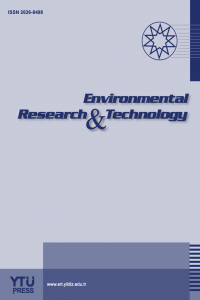Method for Synthesis and Control of Biofuel Supply Chains Integrated with the Relevant Systems for Utilization of Production-Generated Waste By-products
Method for Synthesis and Control of Biofuel Supply Chains Integrated with the Relevant Systems for Utilization of Production-Generated Waste By-products
biofuels, generation and management, supply chain, wastes,
___
- [1]. IEA, World energy outlook 2007, Paris, France: International Energy Agency, 2007.
- [2]. European Commission, Directive 2009/28/EC of the European Parliament and of the Council of 23 April 2009 on the Promotion of the use of energy from renewable sources and Amending and Subsequently Repealing Directives 2001/77/EC and 2003/30/EC. Official J Eur Parliam, Brussels.
- [3]. O. Kitani, Carl HW, The state of food and agriculture. New York: Food and Agriculture Organization, Rome, Italy: FAO, 2008, vol. 5.
- [4]. S. Banerjee, S. Mudliar, R. Sen, L. Giri, D. Satpute, T. Chakrabarti, R.A. Pandey, “Commercializing lignocellulosic bioethanol: technology bottlenecks and possible remedies”, Biofuels, Bioproducts and Biorefining 4, pp 77–93, 2010.
- [5]. G. Dragone, B. Fernandes, A. Vicente, J. Teixeira, “Third generation biofuels from microalgae”, In: Vilas AM, editor. Current research, technology and education topics in applied microbiology and microbial biotechnology. Badajoz: Formatex Research Center; pp. 1355-66, 2010.
- [6]. O. Akgul, A. Zamboni, F. Bezzo, N. Shah, L. Papageorgiou, “Optimization-Based Approaches for Bioethanol Supply Chains”, Ind. Eng. Chem. Res., 50, 4927-4938, 2011.
- [7]. The IEEE website. [online], REPUBLIC OF BULGARIA, National statistical institute, http://www.nsi.bg
- [8]. W. Zegada-Lizarazu, A. Monti, “Energy crops in rotation. A review”, Biomass and bioenergy, vol. 35, 12-25, 2011.
- [9]. B. McCarl, A. Meeraus, Pvd. Eijk, M. Bussieck, S. Dirkse, P. Steacy, McCarl Expanded GAMS user Guide, Version 22.9. GAMS Development Corporation, 2008.
- Yayın Aralığı: Yılda 4 Sayı
- Başlangıç: 2018
- Yayıncı: Yıldız Teknik Üniversitesi
Copper Removal From Ammoniacal Spent Etchant by Using Magnetic Nanoparticles
Oumer Ali Yassin, Zehra Semra Can, Seval GENC, Ebru TOKSOY ONER, Gul Gulenay Haciosmanoglu
Sub Optimal E-Waste Management and the Lost Opportunity
Rakesh TYAGİ, Priyanka KAUSHAL
Yunzile Dzhelil, Evgeniy Ganev, Boyan Ivanov, Dragomir Dobrudzhaliev
Fuzzy Approach to Predict Methane Production in Full-Scale Bioreactor Landfills
Martina Di Addario, Bernardo Ruggeri
Anil Tevfik Kocer, Benan Inan, Didem Ozcimen
Development of Velocity Sensor to Optimize the Energy Yield in a Biogas Plant
Abdullah Nsair, Olaf Bade, Kerstin Kuchta
Adsorption of 2,4-Dichlorophenoxyacetic Acid on Peanut Shells: Effect of Initial Concentration
